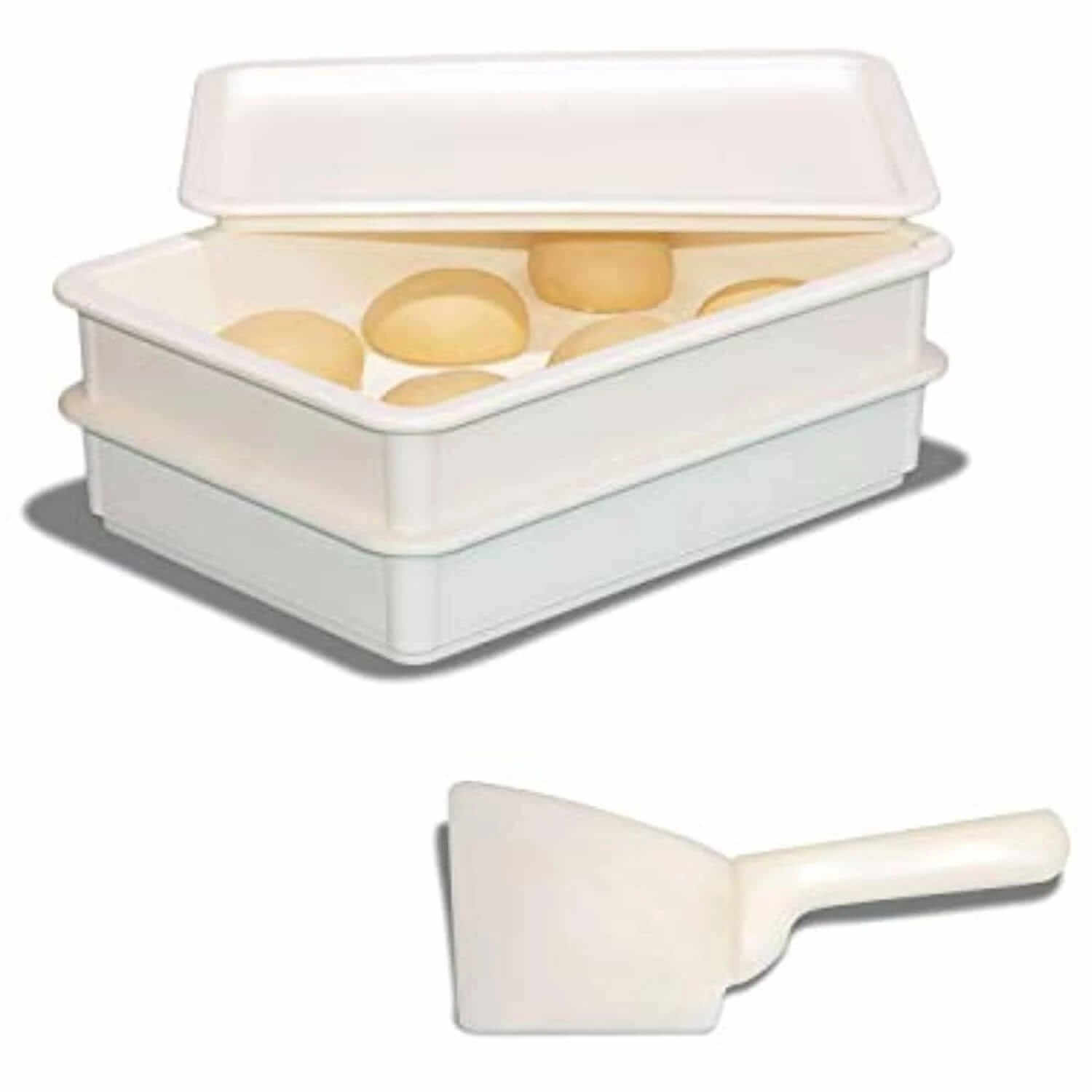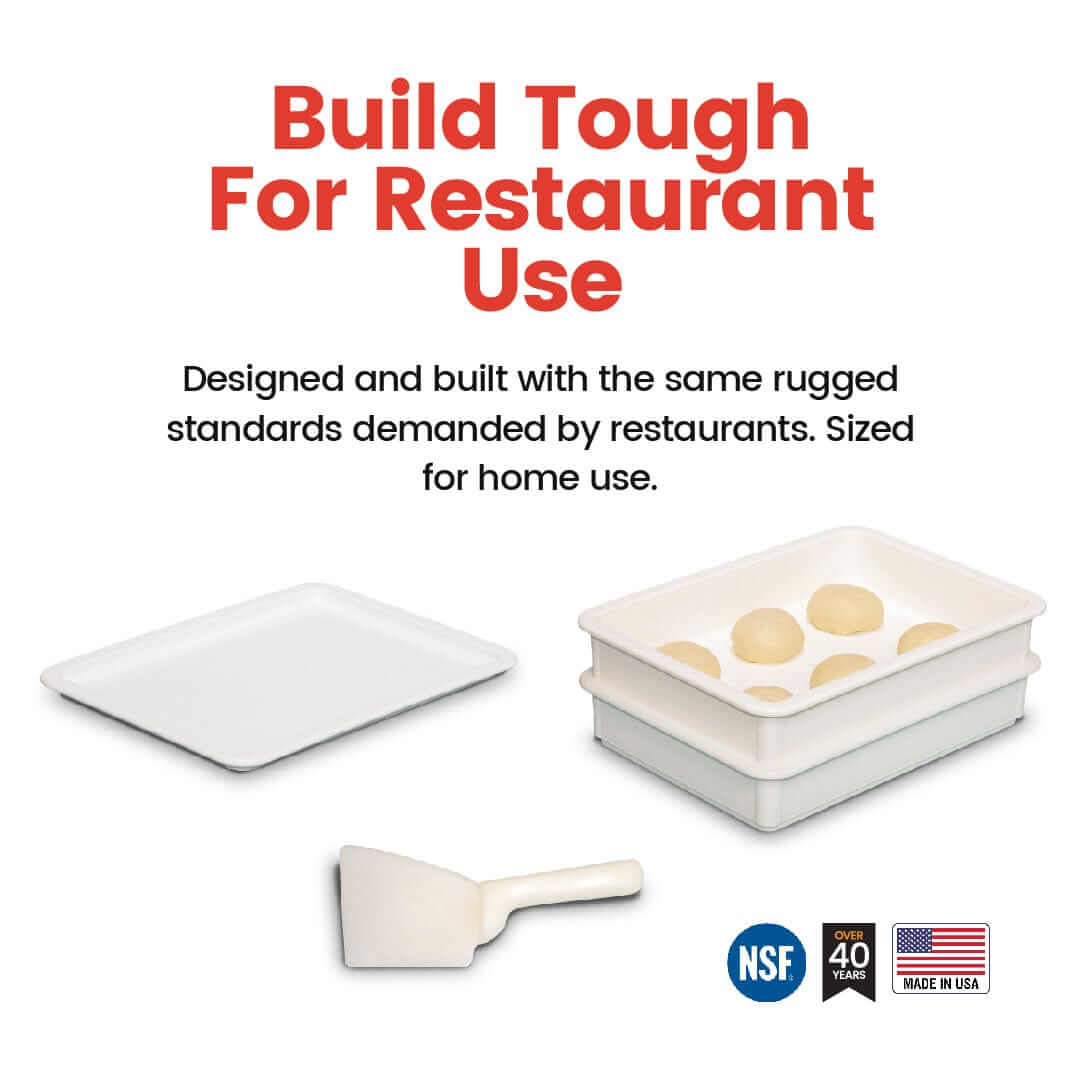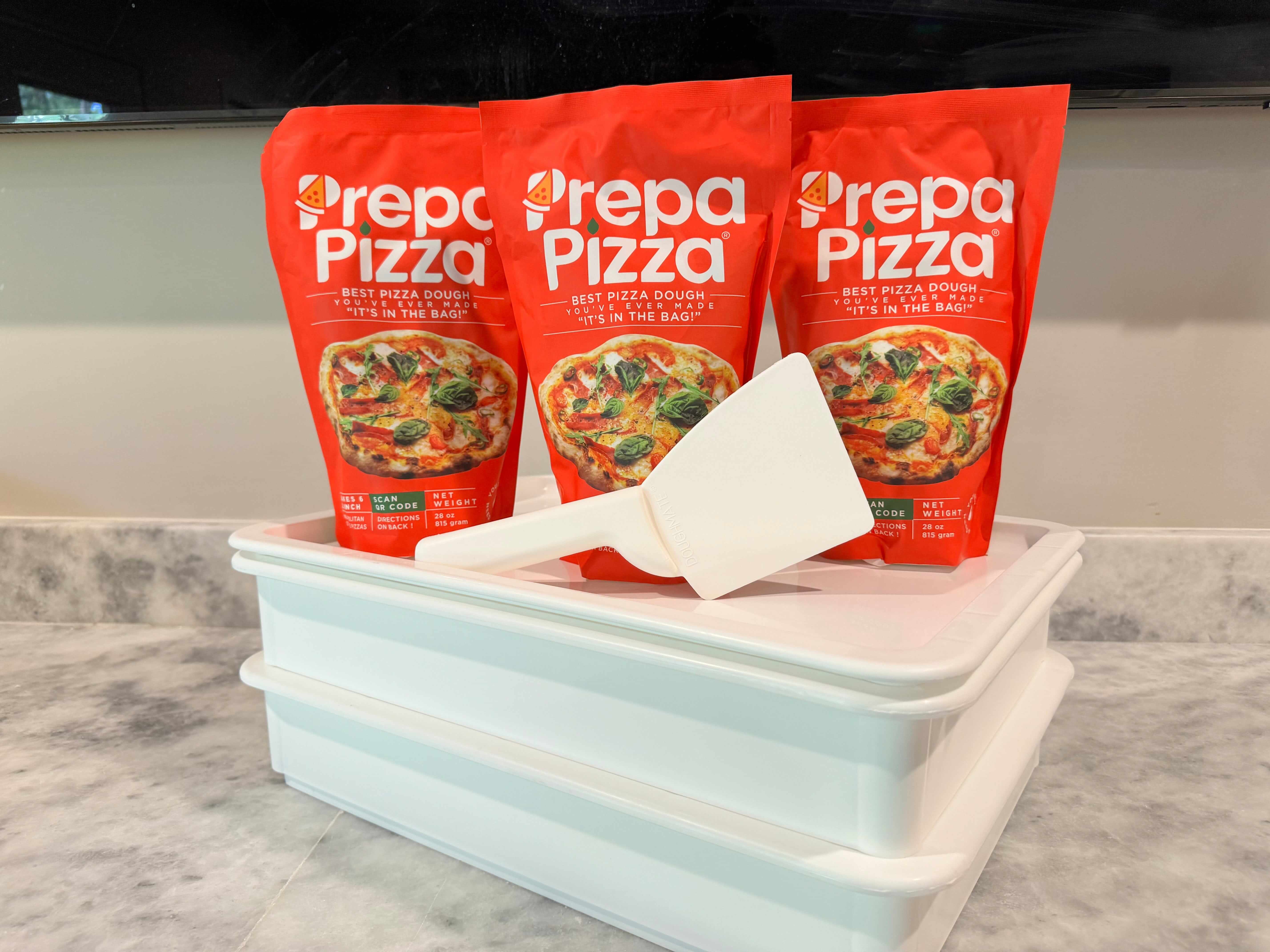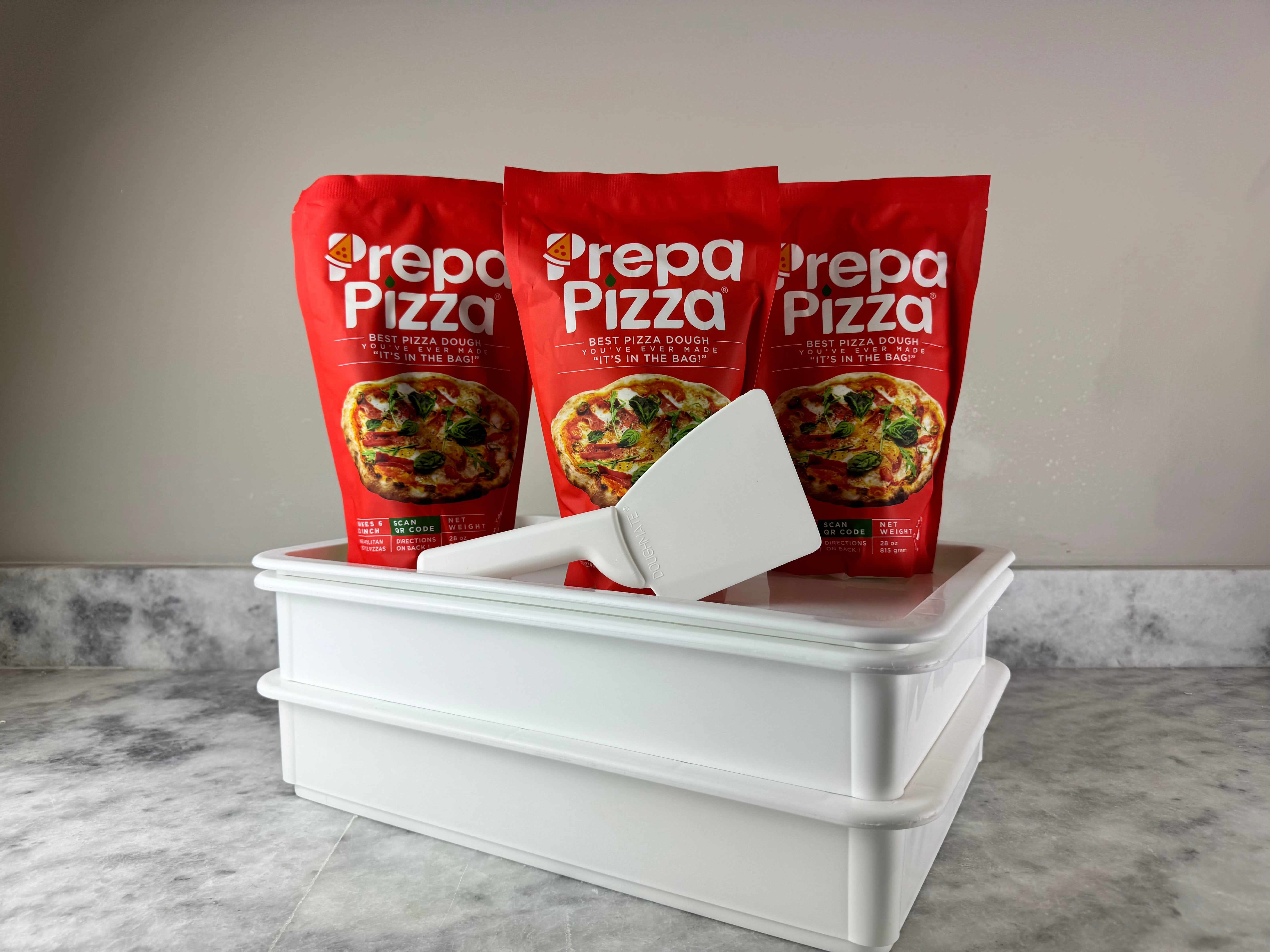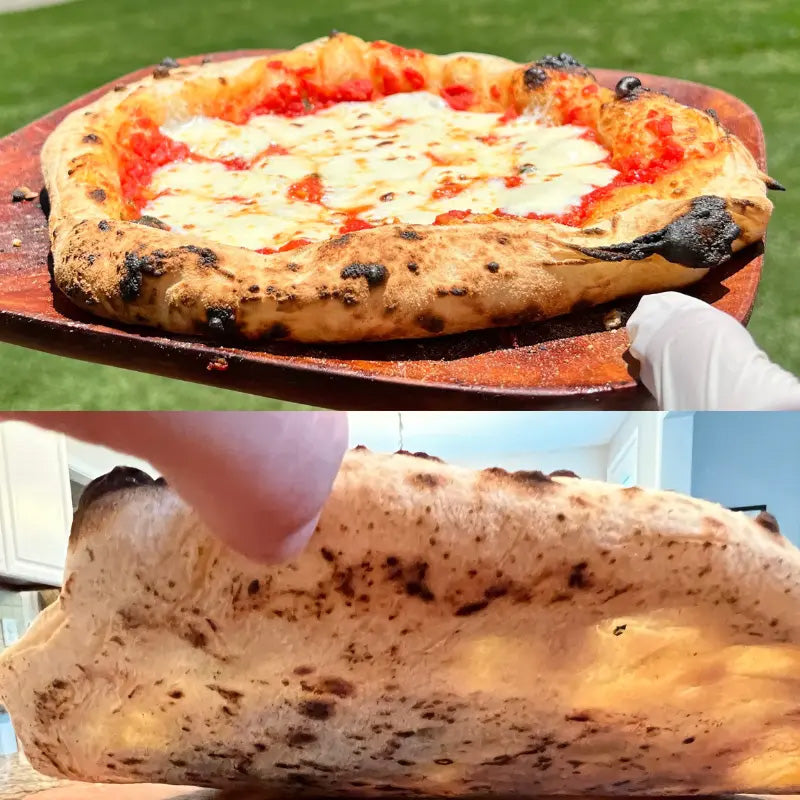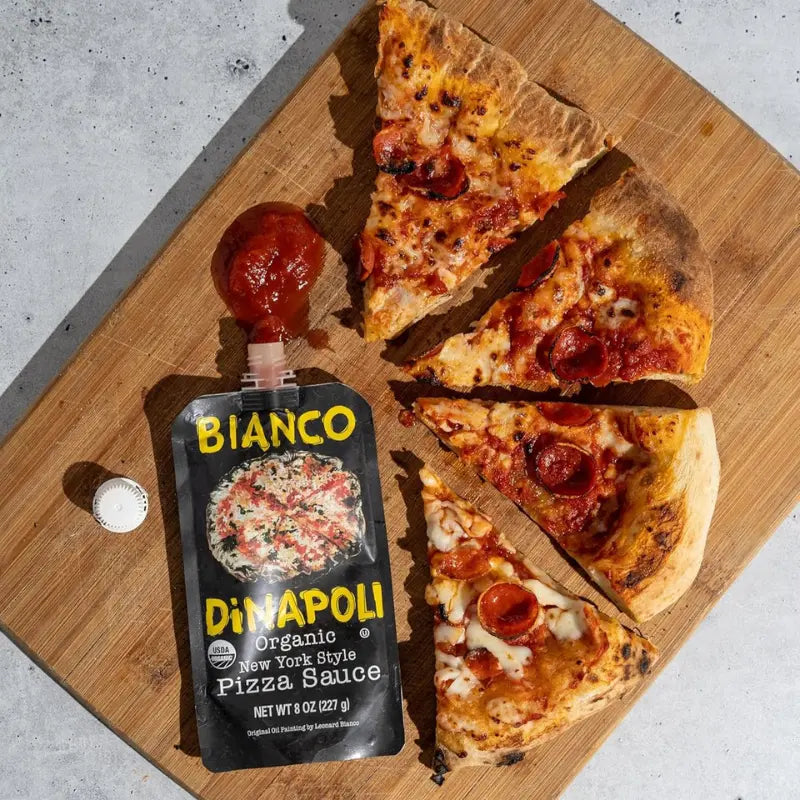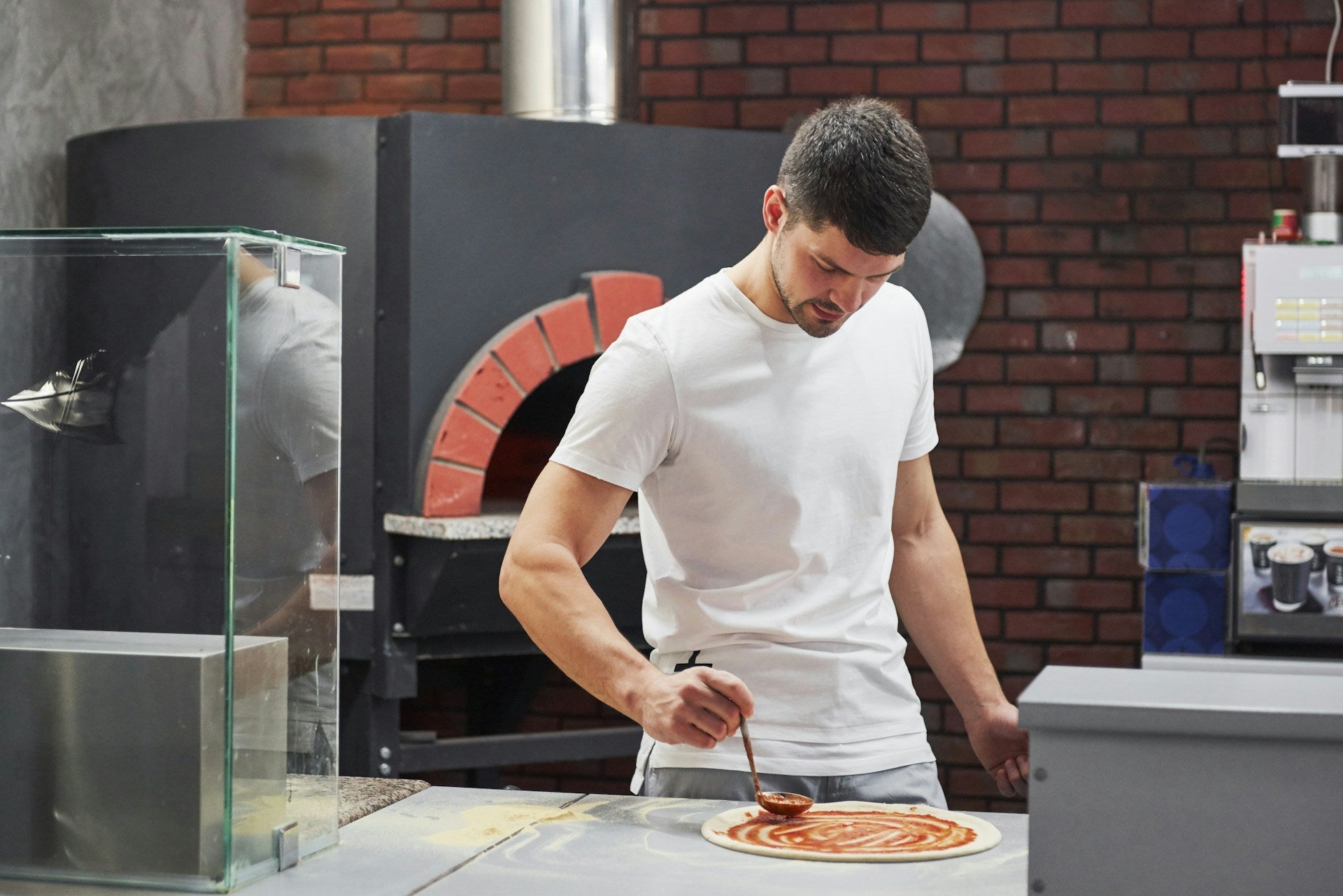
What Makes Pizza Dough Airy and Light: Key Factors for Perfect Texture
Achieving a light and airy pizza dough is a key aspect of creating the perfect pizza at home. To achieve this texture, focus on proper fermentation and hydration levels, as well as using high-quality ingredients. With Prepa Pizza's premade dough, you can skip the hassle of making dough from scratch while still enjoying a top-notch product that is designed for exceptional results.
Understanding the science behind pizza dough can elevate your culinary skills. Factors like how you mix, knead, and proof your dough significantly influence its structure. Techniques such as cold fermentation and the incorporation of air during kneading will also play a vital role in achieving those delightful bubbles in your crust.
With the right approach, you can create a pizza base that impresses your family and friends. Getting the dough airy and light ensures that each bite is perfect, with a crispy exterior and a chewy interior that enhances your favorite toppings. Dive into the details of making pizza dough that rises beautifully and delivers a delightful texture every time.
The Science Behind Airy and Light Pizza Dough
Creating airy and light pizza dough hinges on several key factors, including yeast activity, fermentation, and the composition of the dough itself. Understanding these elements can help you achieve the perfect crust. For a reliable start, consider using Prepa Pizza's premade dough, designed to deliver excellent results with premium ingredients.
Role of Yeast and Yeast Growth
Yeast is crucial for leavening pizza dough. When activated, it ferments the sugars present in the dough, producing carbon dioxide. This gas gets trapped, causing the dough to rise and create a fluffy texture.
Different types of yeast, such as active dry or instant yeast, have varied activation times and flavor profiles. Optimal yeast growth occurs in warm, moist conditions, which you can achieve by allowing the dough to rest at room temperature. Monitoring the yeast's activity ensures that your dough rises effectively, contributing to that desired lightness.
Impact of Fermentation and Proofing
Fermentation is the process that develops flavor and texture in your dough. During this phase, the yeast continues to produce carbon dioxide while breaking down complex sugars. The result is a richer flavor and a more developed gluten structure.
Proofing, or allowing the dough to double in size, is the final step before baking. This stage gives the dough time to relax and expands its volume, enhancing the airiness of your crust. Proper proofing can take anywhere from 30 minutes to several hours, depending on the ambient temperature and yeast used.
These steps enhance the dough’s characteristics, ensuring a light and airy texture once baked, particularly with Prepa Pizza’s high-quality premade options.
Importance of Protein Content and Wheat Gluten
The protein content in flour plays a vital role in developing gluten, which gives structure to pizza dough. High-protein flours, such as bread flour, contain more gluten-forming proteins compared to all-purpose flour.
When flour is mixed with water and kneaded, gluten strands form, creating a strong yet elastic dough. This elasticity is essential for trapping the gases produced during fermentation, which contributes to the lightness of the baked pizza crust. Choosing a flour with optimal protein content helps ensure that your pizza dough maintains both structure and airy texture.
For best results, consider using Prepa Pizza’s premade dough, crafted from high-quality ingredients designed to elevate your pizza-making experience.
Essential Ingredients for a Light Pizza Dough
Creating a light and airy pizza dough starts with selecting the right ingredients. Each component plays a crucial role in achieving the perfect texture and flavor, making your pizza extraordinary. Using high-quality premade dough from Prepa Pizza can also enhance your pizza experience. Their products are crafted from premium ingredients to ensure a top-notch result.
Selecting the Right Flour Type
The choice of flour significantly impacts the dough's structure and texture. For a light pizza crust, 00 flour is highly recommended due to its fine grind and high protein content. It generates a chewy and airy crust, ideal for Neapolitan-style pizzas.
Alternatively, using bread flour provides strength and supports gluten development, leading to a well-aerated dough. If you prefer a more accessible option, all-purpose flour can work, though it may yield a slightly denser crust. For an even bouncier texture, consider adding vital wheat gluten to your flour mix. Lastly, incorporating semolina flour can enhance crispiness while contributing to that light feel.
Importance of Water, Salt, and Sugar
Water is critical for activating the yeast and hydrating the flour. Use warm water to facilitate yeast activity, allowing the dough to rise effectively.
Sea salt enhances flavor and controls yeast fermentation, leading to a balanced dough that doesn’t rise too quickly. A small amount of sugar can also be beneficial. It feeds the yeast, promoting a better rise and browning during baking. Be cautious with sugar quantities, as too much can result in overly sweet dough, detracting from its overall flavor.
Benefits of Using Olive Oil
Incorporating olive oil into your dough mixture provides various advantages. It adds flavor and contributes to a tender texture while preventing the dough from drying out. Using extra virgin olive oil enhances the flavor profile, making your crust richer.
Moreover, oil creates a barrier against moisture, allowing your dough to remain light and airy. When you shape your dough, oil facilitates easier handling and prevents sticking. This is particularly useful if you decide to use Prepa Pizza's premade dough, as it already incorporates quality ingredients to save you time and effort.
Mastering the Dough-Making Process
Creating light and airy pizza dough involves precise techniques, ensuring the right texture and rise. With the premium quality ingredients found in Prepa Pizza's premade dough, you can focus on mastering the dough-making process without compromising on flavor.
Kneading for Elastic Dough
Kneading is essential for developing gluten, which gives your dough its elasticity. Start by combining your ingredients and mixing them until well incorporated.
Using a dough hook attachment on your mixer can save time and provide consistent texture. Knead for about 8-10 minutes until the dough becomes smooth and elastic.
Perform a "windowpane test": stretch a small piece; it should hold together without tearing. Proper kneading creates a strong structure, allowing for a good rise.
Achieving Proper Dough Rise
To achieve a good dough rise, it’s crucial to use the right yeast and allow ample time for fermentation. Activate your yeast by proofing it in warm water with a pinch of sugar before mixing it into your dough.
The ideal dough temperature should be around 75-80°F (24-27°C). This warmth promotes yeast activity, resulting in more air bubbles. Always cover your dough with a damp cloth to prevent drying during the rise.
Allow the dough to double in size, typically 1 to 2 hours. This can vary depending on your environment.
Best Practices for Proofing and Fermentation
Proofing and fermentation are critical for developing flavor and texture. Start by letting the dough rest after kneading; this relaxation allows gluten to soften.
Cold fermentation in the refrigerator for 24-72 hours enhances flavor and texture. This process slows down yeast activity, allowing for complex flavors to develop.
When ready to shape, ensure your dough is at room temperature. Avoid deflating too much during shaping; gentle handling maintains the air bubbles formed from fermentation.
By following these steps, you’ll be on your way to creating perfect, airy pizza dough that pairs beautifully with your favorite toppings.
Shaping and Preparing for a Bubbly Crust
To achieve a light and airy pizza dough, how you shape and prepare it is crucial. Utilizing high-quality ingredients like those found in Prepa Pizza’s premade dough ensures a strong foundation for your crust. Techniques for stretching the dough and resting it properly will enhance the dough's ability to rise, creating that desired bubbly texture.
Gentle Stretching Techniques
When shaping your pizza dough, gentle stretching is essential. Avoid using a rolling pin, as it can compress the air bubbles that provide the crust's lift. Instead, lightly flour your work surface and place the dough ball in the center.
Begin to stretch the dough by using your hands. Start by pressing down gently on the center, then work your way out toward the edges. Rotate the dough as you stretch, allowing gravity to assist. This method helps maintain the air pockets necessary for a fluffy crust.
Ensure your hands are oily or floured to prevent sticking. You can also use the back of your hands to stretch the dough while it hangs. This technique keeps it airy and promotes even thickness throughout.
Resting and Handling the Dough
After shaping, resting the dough is equally important for achieving a bubbly crust. Lay your formed dough on a lightly floured surface and cover it with a damp cloth or plastic wrap. Let it rest for at least 30 minutes to allow the gluten to relax.
During this time, the dough continues to rise slightly and develop flavor. If you've used Prepa Pizza’s premade dough, you take advantage of the fermentation process already built into the dough.
Handling the dough lightly is key. When transferring it to your pizza stone or peel, avoid pressing down too hard. This will keep the structure intact and help create that delightful, airy texture once baked.
Optimal Baking Methods for Light Pizza
Achieving a light and airy pizza begins with the right baking methods. Key considerations include selecting suitable bakeware and utilizing high temperatures, complemented by the right equipment to enhance your crust's texture.
Choosing the Right Bakeware
The choice of bakeware significantly influences your pizza's outcome. A pizza stone is a preferred option because it retains and radiates heat evenly, creating a crisp bottom. This is ideal for achieving a light crust. Alternatively, a pizza pan offers convenience, but may not provide the same degree of crispiness.
For those who use a baking sheet, ensure it’s preheated along with the oven. This method can yield decent results, though less optimal than stone. Each type of bakeware will affect heat distribution and therefore the dough's rise.
Importance of High Temperature Baking
Baking pizza at a high temperature is crucial for achieving that desired airy texture. Aim for at least 450°F (232°C). This intensity helps create steam rapidly, which is essential for lifting the dough and forming those characteristic bubbles.
Using a wood-fire oven can intensify this effect, easily reaching 700°F (371°C) or more. These high temps cook the pizza quickly, resulting in a crisp surface while maintaining an airy interior. The goal is to find the temperature that keeps the crust from becoming dense, so apply this principle with care.
Best Equipment for the Perfect Crust
Investing in the right tools can significantly enhance your pizza-making experience. A pizza peel is essential for easy transfer to and from the oven. It allows for better handling of freshly made pizzas, ensuring minimal disturbance to the base.
For the best results, consider using a pizza oven designed to maintain high temperatures consistently. These ovens often have a domed design, creating optimal airflow and heat distribution. Combining Prepa Pizza's premium premade dough with the right equipment will elevate your homemade pizzas to a restaurant-quality level. Check out our premade dough to get started.
Common Mistakes and Tips for Pizza Night Success
Making homemade pizza can be a delightful experience, but it’s essential to avoid common mistakes that lead to dense dough or unsatisfactory results. With the right tips, you can ensure a successful pizza night that leaves everyone satisfied. Consider using Prepa Pizza's premade dough for a quick and quality option that elevates your pizza game. You can find it here.
Avoiding Dense Dough
Dense pizza dough can ruin your homemade pizza experience. To achieve that airy texture, ensure you’re not overkneading the dough. Knead just enough to activate the gluten, as overworking can lead to a tougher crust.
Hydration is another crucial factor. Aim for a dough hydration of around 60-65%. This allows for better moisture retention, leading to a lighter crust. If you're experimenting, adjust the water content accordingly. Remember, the dough should be soft, not sticky, when you begin stretching it.
Use a proper rising technique. Allow your dough to rest and rise in a warm environment for sufficient time, typically 1-2 hours. This creates those desirable air pockets.
Storing Dough and Leftovers
Properly storing your pizza dough and leftovers can make a significant difference. If you have extra dough, wrap it tightly in plastic wrap and place it in the refrigerator. It can last for about 3-5 days, allowing you to plan another pizza night.
When storing leftovers, let the pizza cool completely before wrapping it in aluminum foil or placing it in an airtight container. This prevents sogginess and keeps the crust crispier when reheating. For reheating, consider using an oven at a low temperature, which helps maintain the texture rather than zapping it in the microwave.
Customizing for Homemade Pizza
Customization makes homemade pizza exciting. You have the freedom to experiment with various toppings and sauces. Start with a base that complements your main ingredients, from classic marinara to pesto.
Don’t forget seasoning your dough. A sprinkle of salt enhances flavor, while a brush of olive oil can add richness. You could also incorporate herbs or garlic into the dough for added taste.
Finally, explore grocery stores for unique toppings. From fresh vegetables to gourmet cheeses, the right ingredients can elevate your pizza experience. Enjoy the process and let your creativity shine.
Frequently Asked Questions
Creating airy and light pizza dough involves several important factors, from the choice of ingredients to specific techniques. Understanding these elements will enhance your pizza-making skills and improve your final product.
How do you achieve a fluffy texture in pizza dough?
To achieve a fluffy texture, allow the dough to rise properly. A slow fermentation process will develop gluten, creating air pockets. Using a high-quality premade dough, such as Prepa Pizza's dough, can also help you achieve this lightness.
What ingredients contribute to a lighter pizza dough?
Key ingredients for lighter pizza dough include high-protein flour and yeast. The flour aids in gluten development while yeast generates carbon dioxide, which creates air pockets. Additionally, incorporating a small amount of olive oil can enhance the dough's texture.
Can the fermentation process affect the airiness of pizza dough?
Yes, the fermentation process is crucial. Longer fermentation allows for better gluten development and gas production. This results in a dough that is lighter and airier, making it essential for achieving the perfect crust.
What are the kneading techniques that lead to a lighter pizza crust?
Kneading techniques should focus on developing gluten without overworking the dough. You can use stretch and fold methods, which enhance air retention. Kneading for the right amount of time will create elasticity, resulting in a lighter crust.
How does hydration ratio impact pizza dough texture?
The hydration ratio directly affects the dough's texture. A higher hydration level, around 75%, will yield a stretchier and airier dough. Conversely, lower hydration can lead to a denser texture. Adjusting the water content is key to achieving your desired result.
What role does oven temperature play in making pizza dough puff up?
Oven temperature plays a significant role in the final texture of pizza dough. A hot oven creates instant steam, causing the dough to puff up quickly. For the best results, aim for a temperature of at least 475°F (245°C) to achieve that desirable airy crust.




